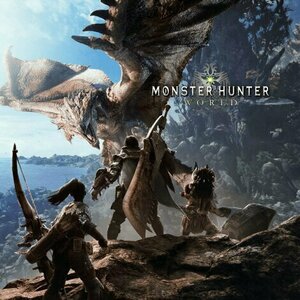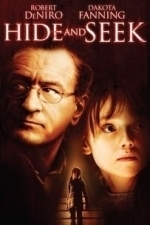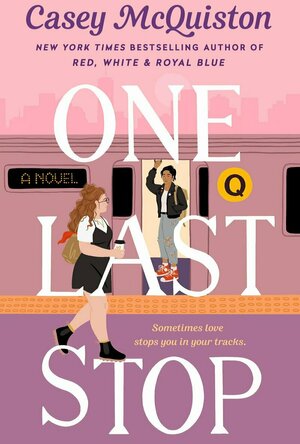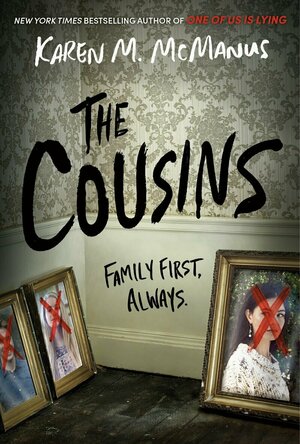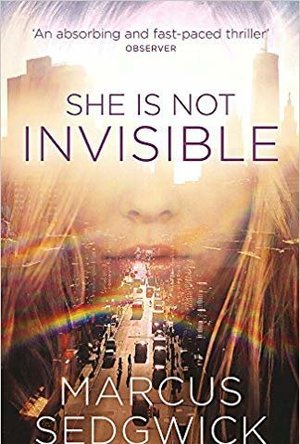Anna Marie Green (7 KP) rated the Xbox One version of Monster Hunter World in Video Games
Jul 3, 2018 (Updated Jul 3, 2018)
But should they?
MH:W is, at its core, is a dungeon crawler designed to feel open-world within its own constraints. With beautiful environments such as the Coral Highlands and the toxic areas festering beneath the Rotten Vale, MHW looks and feels much more massive than the trodden paths you follow. Your first hunts feel thrilling as you take different paths to chase your limping prey, and a cycle of different weather, monsters, and endemic life keep you invested in immersion.
But after hunting a tempered Nergigante for the 20th time, things do begin to fall out of place. You experience the malaise of a Saitama-like hero. Have you become too strong?
Challenging fights become the norm. The occasional arch-tempered monster appears, but scaled damage isn't always the same thing as new difficulty.
In the handheld games, there were dozens of monsters with distinct abilities and variations. MH: Generations had 73 large monsters to hunt. You could even play as a palico.
But that variety just isn't in MH:W.
Granted, the game is an experiment and has provided some good content for no extra cost to the players, which is a feat of its own in comparison to all the other big game developers (EA, Microsoft, Square Enix, Bethesda). They also do an excellent job managing weekly challenges and encouraging community between players. Kulve Taroth hunts were a blast and the free meal in the Hub was an excellent bribe.
MH:W still needs more monsters and at least one new environment. Since its release in January 2018, only three monsters have been added to the game: Deviljho, Kulve Taroth, and Lunastra. Behemoth from Final Fantasy is also making an appearance this July. That's a monster every two months. Don't get me wrong here— that's a fair schedule for content release. Overwatch clocks in at about three months for every hero, so two months is a respectable jog for the quality of the quality of the game. Still, even Overwatch -with it's full player-controlled roster- can become a bit of a slog without those regular updates.
The easiest fix? Capcom needs to finally add in G-Ranks with weapon rarities 9 and 10, and the terrifying monsters to match. The other MH games have generally had these ranks, and the MH:W G updates have been teasing us in rumors since the release, yet we haven't seen any evidence of their existence. A massive content update containing new unique weapons trees, rarity 8 varieties of dead-end trees, armor transmogs, new endemic life and monsters, better armor designs, and more material choices... Capcom has incredible potential on their table that could rekindle gamers' interest in helping the Fifth solve the new mysteries of the New World.
Or, god forbid, suffer the gamers by making them by Monster Hunter: World 2 just to feel like they actually completed the first game.
Gareth von Kallenbach (980 KP) rated Hide and Seek (2005) in Movies
Aug 14, 2019
In the new thriller Hide and Seek, audiences are introduced to Dr. David Callaway (Robert De Niro), a Psychologist who is struggling to help his daughter Emile (Dakota Fanning) after the suicide of her mother. David believes that the best option is to move from New York City to a quite area upstate where he can focus on being a father to his daughter, who has become withdrawn despite intense counseling.
Despite opposition from Emily’s therapist and family friend Katherine (Famke Janssen), David and Emily relocate to a scenic and quite location and hour from the city.
At first everything seems to be going well with the move and David meets an attractive young lady named Elizabeth (Elisabeth Shue), who watches over a little girl for another member of her family. Thinking that a friend will snap Emily from her state, David encourages Elizabeth to come to the house.
David is convinced the addition of a friend will encourage Emily to stop talking about an imaginary friend named Charlie who seems to have preoccupied the little girls time. David is convinced that Charlie is a creation of Emily’s psyche that will fade over time especially as she makes friends and copes with the loss of her mother.
Emily instead withdraws even further from people and a series of bizarre and violent events ensue with Emily insisting that Charlie is the reason behind all of them. As David struggles to deal with the ever increasing tension caused by Charlie, he soon becomes caught up in a situation beyond his control.
The setup for the film is good as your mind races with a myriad of possibilities and outcome. Sadly many of my scenarios, and I suspect most of the audience were better and more satisfying then the conclusion of the film. The film quickly degrades into an abundance of absurdities and situations that seem lifted from the Drama 101 textbook as well as a dozen other and better films in the genre.
While the cast does good work with what they have, it is unsatisfying to see talent like Shue and Janssen reduced to minor supporting characters when they could have brought so much more to the film. Worse yet is De Niro seems to be going through the motions as this brilliant and gifted actor is not given any material that will challenge him and let his brilliant method acting shine.
For the first half of the film it is a mostly enjoyable and intriguing film that does hold your attention. However once the so called surprises of the film are revealed and the film moves towards it’s conclusion, you cant help but think that you have been cheated and deserved a much better payoff for sitting through the first hour of the film. Days after seeing it, I am still stunned at how badly the film ended and how such a good premise and talented cast were horribly wasted on a film that had surprisingly no scares or tension as the audience at my press screening sat largely in silence throughout the film.
My advice, save this for a rental as it is at best, a movie of the week quality film.

Solar Family: Planets for Kids
Education, Games and Stickers
App
**LEARN interesting facts about the PLANETS in the SOLAR SYSTEM with INTERACTIVE STORY and FUN...
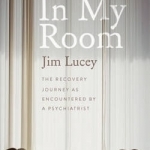
In My Room: The Human Journey as Encountered by a Psychiatrist
Book
'The room is a space for the mind, and a metaphor for the mind at the same time. Most of us will...
Kristy H (1252 KP) rated One Last Stop in Books
Jun 3, 2021
"Truth is, when you spend your whole life alone, it's incredibly appealing to move somewhere big enough to get lost in, where being alone looks like a choice."
I've put off writing this review because it's hard to see how I can do McQuiston's beautiful romance any justice. This book is such a romantic, sexy, and heartwarming read. August is an excellent character. She's spent most of her life in her uncle's shadow, working with her mother to try to solve his missing person's case. August eventually declared herself done--done searching, done with mysteries. But then this beautiful woman appears on the subway, and she offers the biggest mystery of all to August. Why is Jane stuck on the subway and how can August help?
"And she can't believe Jane had the nerve, the audacity, to become the one thing August can't resist: a mystery."
McQuiston gives us the most amazing, diverse queer novel one could ever wish for. August is bi and Jane basically every lesbian's dream. It's impossible not to fall in love with this gorgeous Asian subway vision. Even better, through Jane and other events, it's a tribute to those who came before our generation. Jane was a (incredibly sexy) activist / riot girl in the 1970s, yet is shocked that you can typically be openly gay on the subway now. She comes to everyone's defense there. She's amazing. As for August's roommates, they are beautiful and diverse, including trans and gay characters, with the lovely Myla taking care of the group. There are several drag queens given legitimate, true storylines. To say how meaningful this is to the queer community--it's hard to even explain. All of these characters--roommates Myla, her boyfriend, Niko, and Wes; neighbor Isaiah; coworkers Lucie and Winfield--are real and treated with care. They are funny, flawed, and create the most amazing found family ever.
"Jane doesn't age. She's magnetic and charming and gorgeous. She... kind of lives underground."
As for August and Jane, this is a romance for the ages. This book is swoony and sexy. It will make you laugh; it will make you cry. McQuiston has written a lesbian character for us lesbians to ogle for years to come, and a romance to stack all other romances against. It's funny and heartwarming. There's magic and mystery. There's pancakes. It's a beautiful ode to New York City, the subway, and falling in love. There's seriously nothing not to love.
So yes, I loved this book. I love McQuiston's way with words--the humor, the romance, the way she allows the queer community to have meaningful love stories in our world. This book is flowing with passion, with beauty, and magic. 4.5+ stars.
Heather Cranmer (2721 KP) rated The Cousins in Books
Dec 21, 2020
Mildred Story cut ties with all of her children twenty-four years prior. All of her children swear they have no idea what they did to be cut off. However, when Mildred's grandchild receive a letter from Mildred inviting them to stay and work on her island, her grandchildren are a little suspicious but end up going. However, when they decide to try to figure out the mystery, things take a dangerous turn.
The plot really reeled me in. I love a good mystery, so The Cousins was right up my alley. While the story did flow together really well, I felt that the pacing was a bit on the slow side. It wasn't painfully slow, but it made it where The Cousins wasn't one of those books where you can't put it down. I guess I was just hoping for more action. There were a few plot twists which were a bit unpredictable which was enjoyable. The setting and world building were done nicely. It was easy to feel like I was on the island with everything that was going on. I enjoyed the flashbacks from Mildred's children - Adam, Anders, Archer, and Allison. I felt like there were no cliff hangers and that all my questions were answered by the end of the book. I suppose McManus could make a sequel from this book, but I think that this book would be better left as a standalone.
The characters in The Cousins were written decently enough although I never really cared too much for any one character. I just had a hard time relating to any of the characters, so it was hard to really care for them. Milly came across as being too standoffish and stuck up a lot of the time. While I liked that she wasn't afraid to speak her mind, sometimes I felt like she went a bit overboard. Jonah was an alright character, but I felt like he lacked enough depth to really like him. I just felt like there was something missing with his backstory. Aubrey was an okay character too, but I felt like she wasn't much of a main character. I would have liked to see more of Aubrey because I felt like she didn't really add anything to the story and that her character was kind of pointless. Aubrey's character felt more like a filler in the book. I would have also liked to see more scenes with Mildred as she isn't in many. Knowing the whole story, I can see why she wasn't as present, but it would have been nice to at least have her in the book a bit more.
Trigger warnings for The Cousins include swearing, murder, death, minor violence, drinking (including underage), miscarriage, and teenage pregnancy,
Overall, The Cousins does have an interesting plot despite the execution. The world building is done fantastically, and the plot twists are plentiful. I would recommend The Cousins by Karen M. McManus to those aged 15+ that like mysteries.
Eleanor Luhar (47 KP) rated She Is Not Invisible in Books
Jun 24, 2019
It starts in an airport, with the protagonist and narrator (who's name we learn to be Laureth) and her little brother Benjamin. We soon discover that Laureth is blind, which provides us with a very interesting account of the events of this story. They are going to America, alone, to find their father. He's a writer, and holds his notebooks very dearly - so when Laureth gets an email about one being found in America when he's supposed to be in Switzerland (and then he fails to answer his phone) she immediately assumes something is very wrong.
This is told mostly chronologically, but with memories scattered throughout. Laureth also gives slight hints as to what will be happening later on, reinstating the fact that she is writing about past events. I quite liked this - we were told about certain memories and events that were relevant to the story at that time, nothing more, nothing less.
It turns into quite a dark, suspenseful hunt. Laureth starts to fear that her father may even have taken his own life. The pair even get cornered by a man with a knife who claims to have seen her father. His partner later breaks into their hotel room, searching for some valuable contents of her father's safe. Coincidentally, they run in to her father just moments later.
The obsession of Laureth and Ben's father is coincidences; a very interesting topic. He goes into great detail in his notebook (which we are shown throughout the book), discussing theories and particular physicists' experiences. Bit by bit, he seems to be delving deeper and deeper into the mysteries of the universe. Laureth is caught up in this - she looks for clues in every page of her dad's notebook. But is she looking too hard? Is she finding signs that aren't really there?
Laureth relies on her brother to navigate the world, and although he is only going, he is superbly helpful to her. She is adamant on being an independent young lady, and even hides her impairment from most people she meets. As she is the narrator of this book, we are given an account that does not include any visual descriptions. Instead, the other senses are used far more - sounds and feelings especially. I really liked this.
The ending was wonderful. It was different - completely unexpected. I especially liked how her "coincidental" meeting with Sam turned out to mean nothing at all. And her father's account of what had happened, and his realisation that his obsession was pointless, was so ironic. Laureth and Ben had been on this massive journey, worried their father was so caught up in his obsession that his life was in danger. They began to find strange patterns and signs everywhere - only to find out how coindences are completely fake.
And the last page was so clever, too. It was numbered 354 which is clever in itself - this number holds a massive significance throughout this book - but then there's also the hidden message that's revealed. One of the last sentences prompts you to look closely at the book, and then you find a heartwarming little phrase. I really liked this idea - it seems a bit naff, but actually worked really well.
I did feel like this was maybe a little more for younger adults (I'm nearly 18) but it was really easy to follow and quick to read. It wasn't lengthy or tiresome at all. 4 stars.

Grudgeball: Enter the Chaosphere – Regular Show's Extreme Sport of the Future
Games and Entertainment
App
Jump into the explosive action of the future's most extreme sport. Join Mordecai, Rigby and the rest...
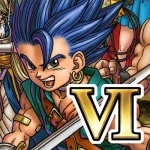
DRAGON QUEST VI
Games
App
Dragon Quest VI: Realms of Revelation , the final instalment in the Zenithian trilogy, is now...

iTanpura - Tanpura Player
Music and Lifestyle
App
Got tanpura? Well guess what, we have two for you, PLUS a Swar Mandal AND a Sur-Peti / Shruti box!...
